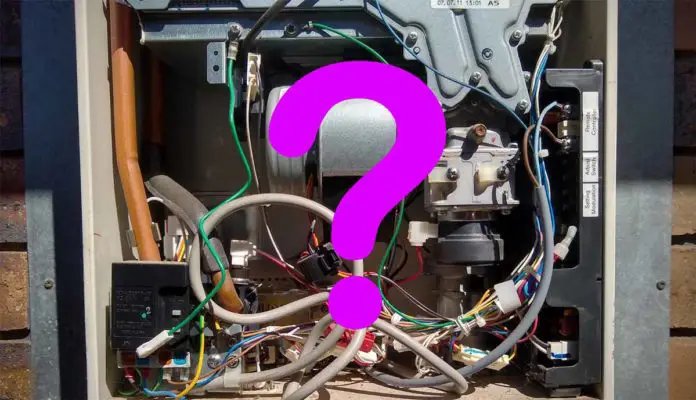
Error codes are your water heater’s way of communicating that something isn’t right. Think of it like a car’s check engine light. The F1 code on Bosch water heaters often relates to problems with the flame detection. It’s like the heater is trying to tell you, “Hey, I can’t sense the flame I need to heat the water!” This can be quite frustrating but don’t worry. Understanding these codes can save you time and possibly money in repair costs, so let’s dive into what could be causing this baffling F1 error.
Understanding the Flame Sensor
Picture this: a flame sensor is to a water heater what a heartbeat monitor is to a human. It continuously checks to ensure the burner’s flame is on so that your water stays warm. When the sensor fails to detect a flame due to dirt or malfunction, it sends out the F1 error code. Essentially, the water heater’s saying, “I’m trying to work here, but I can’t find the flame!”
One common cause for this error is a dirty flame sensor. Over time, the sensor can get coated with carbon and dirt, blocking its ability to detect the flame accurately. Imagine if you tried reading a book with smudged glasses; it’s kind of like that for the sensor. Regular cleaning with a fine-grit sandpaper or a scotch pad can often resolve this issue. But be gentle, you don’t want to damage the delicate sensor.
Another possibility is an improper gas supply. Just like a car struggling without fuel, your heater can’t function without gas. If there’s an interruption in the gas flow, even briefly, this could trigger the F1 code. Ensure there’s no obstruction in the gas line and that everything is connected securely.
Issues with the Ignition System
If you’ve ever tried lighting a campfire with wet matches, you’ll understand the frustration of an ignition system not functioning correctly. The ignition system is responsible for lighting the burner, and if anything disrupts this process, the F1 error makes its unwanted appearance.
Sometimes the ignition system parts can wear out or get dirty, much like any components in frequent use. Regular maintenance can prevent this, as can promptly replacing worn-out parts. If the igniter is defective or the wiring isn’t in top shape, the water heater won’t light properly, resulting in that pesky error code.
Occasionally, it may not be the parts themselves but rather their connections. Loose connections can disrupt the electricity flow necessary for ignition. Picture them as puzzle pieces that need to fit perfectly for the whole picture to work. Tightening these can sometimes resolve the issue outright, restoring your water heater’s functionality without further ado.
Ventilation Problems
Ventilation isn’t just crucial for humans; your water heater needs to breathe too! Proper venting ensures that gases produced during combustion escape safely while bringing in fresh air necessary for burning the flame. If vents are blocked or restricted, it might lead to combustion issues that trigger the F1 error code.
Check for any obstructions in the vent like bird nests or debris—you wouldn’t want anything clogging up the system. Consider it like a vacuum cleaner; it can’t perform well with a blocked hose. Keeping vents clear means your heater can function without hinderance.
Also, ensure that the room has adequate ventilation. A confined space without proper airflow can choke your heater, preventing it from igniting correctly. Keeping appropriate space around your water heater and ensuring vents are clean and unobstructed helps maintain its efficiency.
Final Thoughts and Preventative Measures
Understanding and interpreting the F1 error code can feel like learning a new language, but it’s not as complex as it first appears. Cleaning sensors, checking the gas supply, ensuring ignition components are in good shape, and verifying proper ventilation can go a long way in preventing this issue.
Routine maintenance is your best friend here. Just as you wouldn’t ignore regular dental check-ups, don’t overlook your water heater’s upkeep. Cleaning the flame sensor a few times a year and checking for gas line integrity can act as preventative measures to keep that F1 error at bay.
If you’ve tried all the above solutions and the problem persists, it might be time to call in a professional technician. They have the expertise to dig deeper into more nuanced issues that might not be apparent to the naked eye. Remember, a stitch in time saves nine, and addressing small issues now can prevent bigger, more costly repairs down the road. Happy heating!